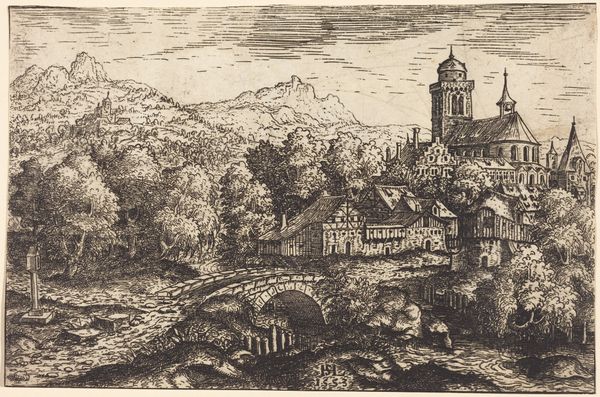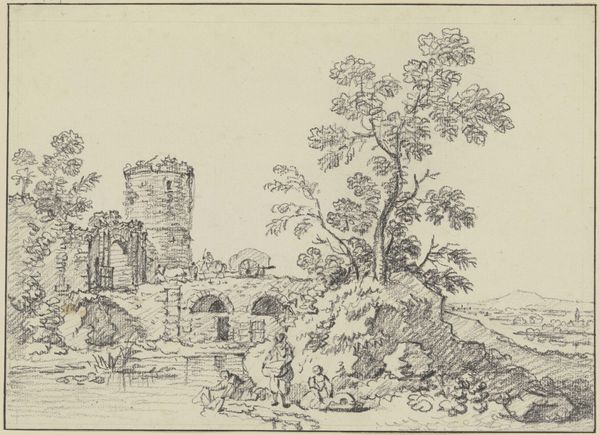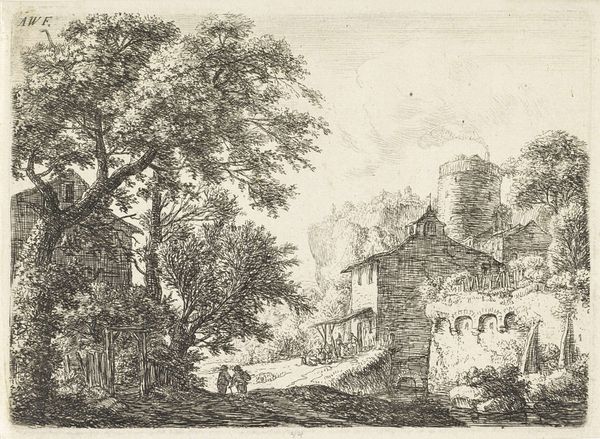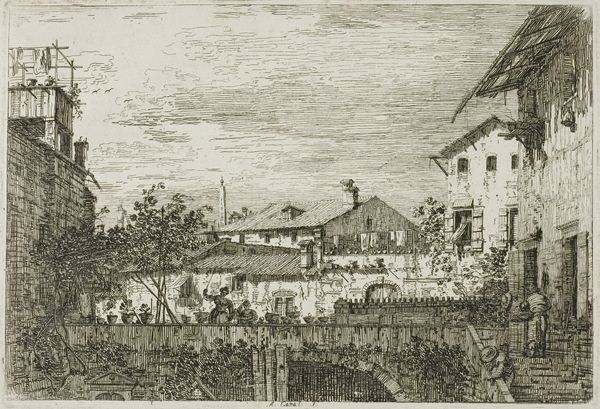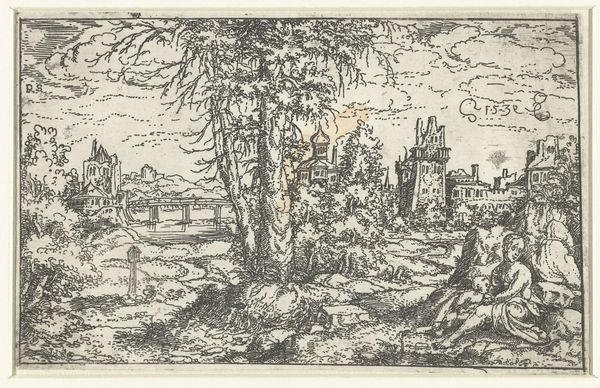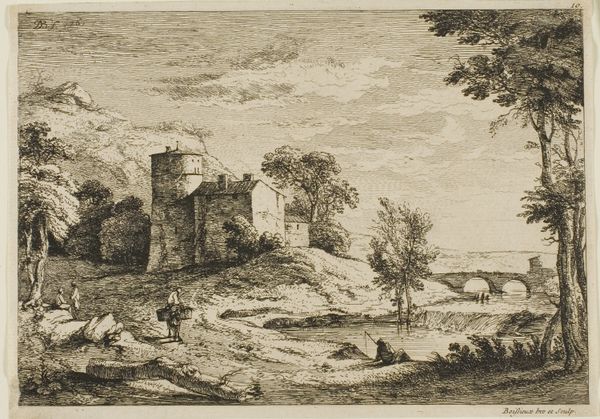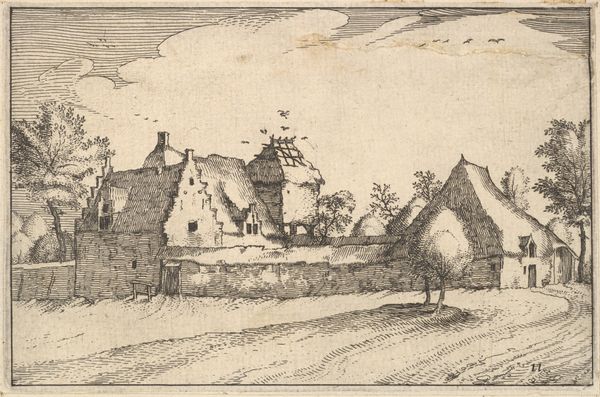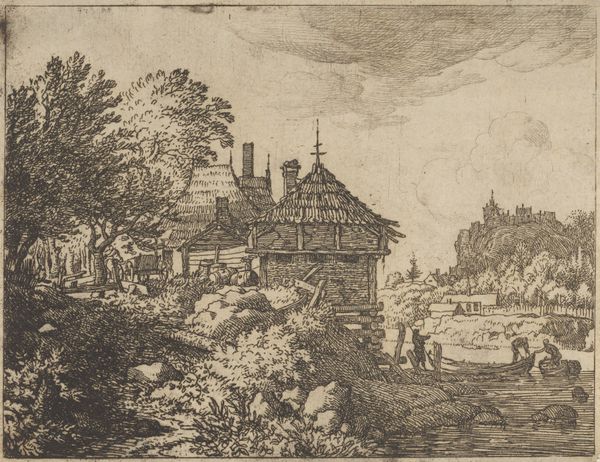
Landscape with two horned goats in shadow at left foreground, village buildings beyond, from the series 'The Small Landscapes' 1641 - 1678
0:00
0:00
drawing, print, etching
#
drawing
#
dutch-golden-age
# print
#
etching
#
landscape
#
cityscape
#
realism
Dimensions: plate: 1 13/16 x 2 1/4 in. (4.6 x 5.7 cm) sheet: 3 3/16 x 3 3/4 in. (8.1 x 9.5 cm)
Copyright: Public Domain
Curator: Let’s consider this etching by Karel Dujardin, titled 'Landscape with two horned goats in shadow at left foreground, village buildings beyond, from the series "The Small Landscapes,"' dating back to the mid-17th century. The way the goats are tucked into the lower left is very intriguing. What are your initial thoughts? Editor: It feels almost dreamlike, with the fuzzy lines of the etching blurring the distinction between foreground and background. The goats are such a contrast in darkness to the village and the sky, yet there is such little variation of line elsewhere. I am really interested in what others might find here. How do you interpret this work, considering it's an etching? Curator: We can delve into the means of production to better understand its context. Etchings were often more affordable and accessible than paintings, suggesting a broader audience and distribution of landscapes. The "small landscapes" denote their intimate consumption through handling of the prints, perhaps as unbound folios in one's collection. These were commodities meant to signal taste and sophistication through an association with bucolic imagery. How do the goats figure in this imagery and signal sophistication to the consumer? Editor: Well, placing the goats so visibly gives importance to farming and country life. At the same time, though, their obscurity almost contrasts the clean-looking village to invite reflection on their integration. Curator: Precisely. Dujardin has made strategic choices on how to focus the line in these figures, indicating labor at odds with nature. These etchings contributed to a market fascinated by idealizing the countryside. We begin to recognize the work less for its individual meaning but the material processes that were accessible in 17th century Netherlands, contributing to the demand for inexpensive replicable artworks. Editor: So, beyond the pleasant imagery, there's commentary on consumerism, class and how art was becoming more readily accessible in 17th-century Netherlands. I wouldn’t have immediately considered the social implications of its production. Curator: Exactly, by considering the etching process itself, its availability and distribution, and its accessibility for collecting and circulating as a commodity, we start seeing a richer commentary on society's values during Dujardin's time. This brings me to better see the contrast between the idyllic dream versus what capitalism actually entailed!
Comments
No comments
Be the first to comment and join the conversation on the ultimate creative platform.
